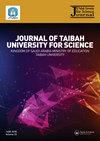地质聚合物稳定土:影响因素、强度发展机制和可持续性
IF 2.8
3区 综合性期刊
Q2 MULTIDISCIPLINARY SCIENCES
引用次数: 0
摘要
本文章由计算机程序翻译,如有差异,请以英文原文为准。
Geopolymer-stabilized soils: influencing factors, strength development mechanism and sustainability
This paper presents the strength and micro-structural characteristics of high plasticity expansive clay stabilized with ordinary Portland cement (OPC) and geopolymers. Furthermore, sustainability aspects such as cost-efficiency, energy consumption and eco-efficiency of the OPC and geopolymer-stabilized soils were compared. The experimental results revealed that the geopolymer-stabilized soils exhibit higher strength and sustainability performance than the OPC-stabilized soils. This study also explores the developed machine learning prediction models of the geopolymer soils’ unconfined compressive strength (UCS) based on experimental data from current research and previous literature. Linear regression (LR), K-nearest neighbour (KNN), random forest (RF), random forest with random search hyperparameter optimization (BRRF) and random forest with grid search hyperparameter optimization (BGRF) were used as part of ensemble algorithms to predict stabilized soils UCS. Eight parameters such as liquid limit (LL), plasticity index (PI), ground granulated blast furnace slag (S) content, fly ash (FA) content, the molarity of NaOH (M), activator to binder ratio (A/B), Na/Al and Si/Al were used as input to predict UCS of geopolymer soils. The following metrics were used to assess the models’ predictive ability for compressive strength: coefficient of determination (R2), root mean square error (RMSE), mean absolute error (MAE) and mean square error (MSE). The BRRF model has a good potential to predict the UCS of geopolymer soils, according to the findings of its testing (MAE = 0.27, MSE = 0.21, RMSE = 0.46, R2 = 0.99) and training (MAE = 0.78, MSE = 1.48, RMSE = 1.23, R2 = 0.96) phases. According to the RF model's feature importance study, slag content and liquid limit were found to influence forecasting compressive strength, while fly ash content has the least influence.
求助全文
通过发布文献求助,成功后即可免费获取论文全文。
去求助
来源期刊

Journal of Taibah University for Science
MULTIDISCIPLINARY SCIENCES-
CiteScore
6.60
自引率
6.10%
发文量
102
审稿时长
19 weeks
期刊介绍:
Journal of Taibah University for Science (JTUSCI) is an international scientific journal for the basic sciences. This journal is produced and published by Taibah University, Madinah, Kingdom of Saudi Arabia. The scope of the journal is to publish peer reviewed research papers, short communications, reviews and comments as well as the scientific conference proceedings in a special issue. The emphasis is on biology, geology, chemistry, environmental control, mathematics and statistics, nanotechnology, physics, and related fields of study. The JTUSCI now quarterly publishes four issues (Jan, Apr, Jul and Oct) per year. Submission to the Journal is based on the understanding that the article has not been previously published in any other form and is not considered for publication elsewhere.
 求助内容:
求助内容: 应助结果提醒方式:
应助结果提醒方式:


